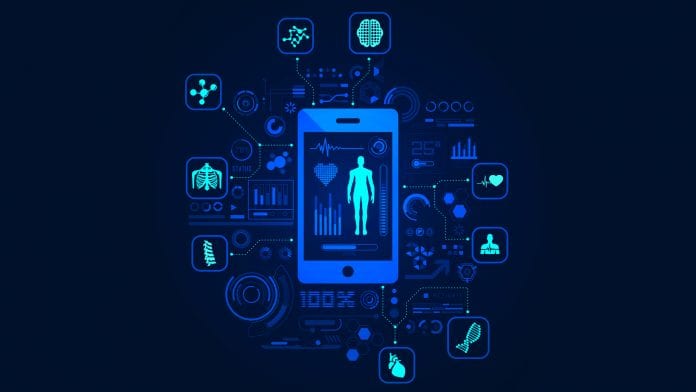
In this article, ER physician Dr Ajala Ngarndi discusses how the response to the COVID-19 pandemic is shaping the future of the healthcare sector as it rapidly adopts new systems such as telemedicine.
The healthcare sector is renowned for being one of the most active adopters of new technology and innovations in efforts to improve patient outcomes. However, the road to adoption is far smooth, with many new developments facing strict regulations, public mistrust, and complex healthcare systems. The pandemic has been devastating as it has overwhelmed hospitals, but the reaction to the spread of COVID-19 has served to help change perceptions around the value of new health technologies to accelerate their adoption.
Ideas and concepts such as telemedicine, open and transparent data sharing systems, and the optimised availability of scientific research for biopharma companies were well underway, but the pandemic has shone a light on just how essential these developments are.
The explosive rise of Telehealth
As infection rates for COVID-19 continued to explode globally, hospitals and governments have scrambled to try and reduce the number of people attending medical sites in efforts to control the spread of the virus. However, both urgent screening for the virus and normal medical care had to continue in some way.
As a physician who is caring for patients suffering from COVID-19, I feel the urgency for us, the medical community, to evolve in the ways in which we deliver quality healthcare. Here, telehealth has been a saving grace. By allowing medical professionals to interact with patients remotely, vital healthcare can still be delivered and help to control the levels of footfall to hospitals and medical offices. This year approximately one billion healthcare-related virtual interactions are expected to happen. Although some elements of healthcare require in-person attendance, the incorporation of telehealth technology helps to prioritise this category whilst continuing to provide medical care to other patients.
The pandemic has also shown how important telehealth is to other areas of healthcare beyond immediate patient-doctor consultations. For instance, remote video technology is helping surgeons collaborate remotely during the pandemic. This reduces the risk of infection levels in hospital further without preventing vital – potentially life-saving procedures from taking place.
From an administrative standpoint, telehealth has proven its ability to reduce the time pressures medical workers face. It’s also demonstrated its value to patients during this time, helping to boost public demand for such technology to become commonplace. However, the long-term future of telehealth beyond the pandemic will still require a top-level prioritisation from healthcare bodies and governments to consolidate remote healthcare into standard practice.
Why patient data is still vital
The insights contained in inpatient health records are crucial for hospitals, healthcare professionals, and entities to confront global threats such as the current pandemic. In the UK, the government has momentarily relaxed privacy laws related to patient data, to allow for this information to reach researchers, universities, and healthcare workers who need this data to conduct vital healthcare studies. Although this could be considered reasonable, there are still many challenges to address regarding privacy and the operational aspect of platforms.
Before the crisis, doctors were already struggling to find effective electronic health record (EHR) systems to access and navigate patient information. Generally, software platforms are built by rival firms that don’t allow data and patient records to be shared freely, limiting the ability of doctors and researchers to gain meaningful insights. Researchers at the University of California in San Diego have responded by creating a series of tools to help doctors navigate through EHR.
The pandemic has been a call to action for hospitals to adopt more efficient yet transparent platforms to share information that will likely stay in place even after the virus is contained. What’s more, the global impact of the virus has shown just how crucial more collaborative data practices are. Whilst patient privacy is paramount, more open data sharing policies will help medical organisations respond to future healthcare crises with the information they need to hand.
The biopharma revolution
When the virus became a global crisis, scientific organisations worldwide responded swiftly, forming partnerships to effectively combat the spread by accelerating the flow of information. Scientific magazines, who usually do an extensive vetting, started releasing papers related to COVID-19 in bulk, to provide researchers within the biopharma sector with as much information possible to develop treatments and vaccines. One week alone in May had around 4000 papers released.
Organisations are facing new challenges related to the reliability of the information in new scientific papers related to COVID-19. Most of this information used to go through extensive and slow amounts of peer-reviewing, but the urgency to confront the virus has relaxed these reviewing practices in exchange for larger amounts of data.
However, AI technology could be the answer to replace this process. In March, The White House released an open data set with more than 30,000 scientific articles related to the virus and called for the AI community to present ideas that could help speed the process of gathering insights. This trend of open research sharing could mean the dawn of a golden age for biopharma. Organisations can access information with ease and provide results in less time than usual.
The healthcare sector is at the frontline of the coronavirus crisis. For this reason, it’s experiencing an incredible amount of innovation in areas that will change how we perceive and access medical treatment. The systems and platforms currently in place to stop it’s spread will continue improving healthcare access, information availability and we will handle future crises.
Dr Ajala Ngarndi
Guest author
ER physician
The I.V. Doc
























